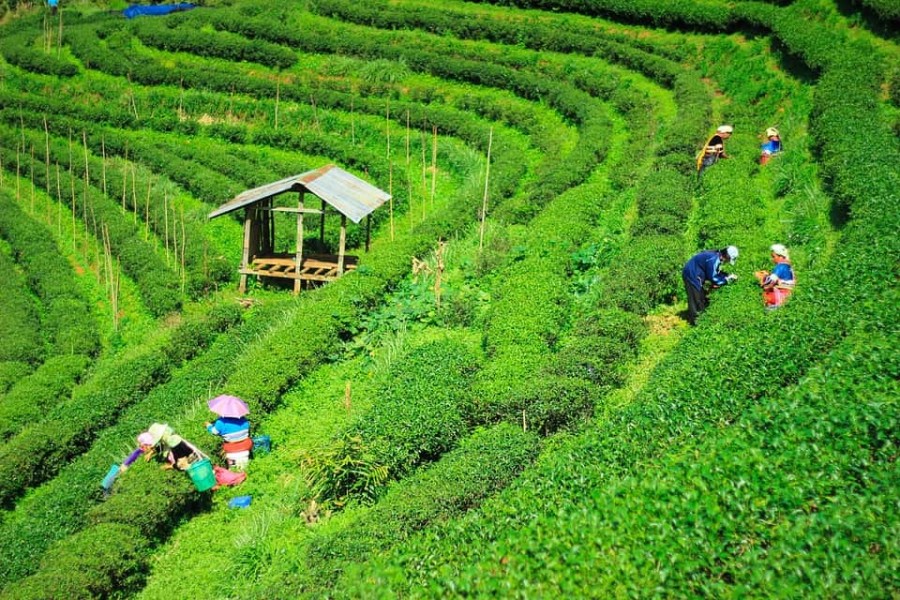Bangladesh Tea Research Institute (BTRI), a body of the Bangladesh Tea Board, has taken an initiative to widen the tea cultivation at the slope of Garo Hills in greater Mymensingh.
To this end, the government is going to take a project, titled ‘Greater Mymensingh District Small Scale Tea Expansion Project’ with a cost of Taka 744.7 million. Duration of the project is from January 1, 2021 to December 31, 2025, reports BSS.
For providing technical assistance to the Tea farmers, an expert team of five members, led by director of the BTRI Dr Mohammad Ali, visited the small-scale tea gardens in Sreebardi, Jhenaigati, Nakla and Nalitabari of Sherpur district of greater Mymensingh and Muktagachha upazila of Mymensingh district.
During the visit, the experts advised the farmers on how to cultivate tea profitably in a simple and scientific way, planting seedlings in the land, applying fertilizers, caring for trees, choosing leaves, controlling insects and diseases and making tea by hand with raw tea leaves (handmade tea).
They urged local entrepreneurs and interested parties to come forward to increase tea cultivation in the region.
Talking to BSS, Dr Mohammad Ali said a number of local entrepreneurs have come forward to make the potential of tea cultivation in the region a reality.
He informed that private entrepreneur Amjad Hossain’s Phoenix Garo Hills Tea Company is trying to make the possibility of tea cultivation in Sherpur district a reality and they have already been able to motivate the local people to cultivate tea.
In order to cultivate tea commercially, he said, 26,000 improved varieties of tea saplings have already been distributed among 26 local farmers and the planting of tea saplings has started from April 29, 2016.
Meanwhile, a total of 27 farmers including six farmers in Sreebardi upazila of Sherpur, three in Nalitabari upazila, thirteen farmers in Jhenaigati upazila, four in Nakla upazila and one farmer in Muktagachha upazila of Mymensingh are starting tea cultivation on 5.31 acres of land.
Tea is a potential cash crop in Bangladesh. As a result of population growth, continuous urbanization and social development of the people, the domestic demand for tea has increased. However, the availability of large-scale land required for the establishment of large-scale tea gardens is gradually declining. In this case, the expansion of small-scale tea cultivation may be a viable option.
Therefore, the government has been implementing various initiatives for the last two decades to expand small-scale tea plantations along with large gardens to meet the growing demand for tea. Panchagarh is a pioneer district for small scale tea cultivation.
Following this, Bangladesh Tea Board is implementing small-scale tea cultivation expansion projects in Panchagarh, Thakurgaon, Lalmonirhat, Nilphamari, Dinajpur, Khagrachhari, Rangamati and Bandarban districts.
Tea cultivation has already been revolutionised in Panchagarh and Thakurgaon districts. Around 9.6 million kg of tea is being produced annually on 8,680 acres of land in the northern part of Bangladesh.
Apart from contributing to the national production of tea in the north, it is also playing an effective role in the socio-economic development of the people of the region and alleviation of rural poverty.
From the very beginning, Bangladesh Tea Board has been working relentlessly to expand tea cultivation and explore new areas suitable for tea cultivation. The greater Mymensingh region is going to be known as the fourth region of tea after Sylhet, Chittagong and Panchagarh.


